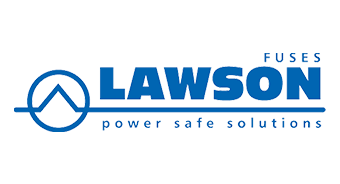Selecting Your Medium Voltage (MV) Cable
A guide to understanding Medium Voltage cable sizing for safety, efficiency, and reliability in power distribution networks.
Medium voltage cables are the critical arteries of power distribution networks, typically operating at voltages from 3.3kV up to 33kV. They are essential for linking primary substations to smaller, local transformers, powering industrial sites, and supporting large-scale commercial infrastructure.
Choosing the correct MV cable is a critical engineering decision that ensures the safety, efficiency, and long-term reliability of a power network. Using an undersized cable can lead to overheating, significant energy loss, and catastrophic failure. An oversized cable, while safe, is not cost-effective and can present installation challenges.
Medium Voltage Cable Size Chart (BS 6622)
The chart below provides an indicative current rating for common single-core copper (Cu) XLPE/SWA cables manufactured to BS 6622. These ratings are based on a standard installation method and set environmental conditions.
| Conductor Size (mm²) | Voltage Rating | Approx. Current Rating (Amps)* |
|---|---|---|
| 50mm² | 6.35/11kV | 215 A |
| 70mm² | 6.35/11kV | 260 A |
| 95mm² | 6.35/11kV | 310 A |
| 120mm² | 6.35/11kV | 355 A |
| 150mm² | 6.35/11kV | 400 A |
| 185mm² | 6.35/11kV | 450 A |
| 240mm² | 6.35/11kV | 520 A |
| 300mm² | 6.35/11kV | 585 A |
| 400mm² | 6.35/11kV | 665 A |
| 120mm² | 19/33kV | 380 A |
| 150mm² | 19/33kV | 425 A |
| 185mm² | 19/33kV | 480 A |
| 240mm² | 19/33kV | 555 A |
| 300mm² | 19/33kV | 630 A |
| 400mm² | 19/33kV | 720 A |
Disclaimer:
*This chart is for guidance only. Ratings are indicative for single-core, treble-cleated cables laid direct in the ground, based on 90°C conductor temp, 15°C ground temp, and soil thermal resistivity of 1.2 K·m/W. Always consult a qualified engineer and refer to BS 7671 for precise calculations.
Critical Factors Influencing Cable Sizing
The current-carrying capacity (ampacity) is not a fixed number. It's highly dependent on the environment and installation method. Values must be adjusted using correction factors based on:
1. Installation Method
- Direct in Ground: Depth and soil thermal properties are key.
- In Ducts: Reduced airflow traps heat, lowering the rating.
- In Air: Spacing on trays or cleats is essential for heat dissipation.
2. Ambient Temperature
Standard ratings assume specific ground (15°C) or air (30°C) temperatures. Higher temperatures lower the cable's ampacity.
3. Cable Grouping
When multiple cables are laid together, their mutual heat raises the local temperature, requiring a de-rating factor to be applied.
4. Conductor Material
- Copper (Cu): Higher conductivity.
- Aluminium (Al): Lighter and more cost-effective but needs a larger size for the same rating.
Ready to Buy Your Cables or Need Advice?
For the best trade prices, immediate stock checks, and rapid delivery quotes on MV and other specialist cables, speak directly to our experts.
Contact Us for a Quick Price Quote Today
Tel: + 44 (0) 1978 340 450 Email: sales@cableservices.co.ukCable Services supply a wide range of products from leading brands, click here to see a sample range of cables that can offer:







